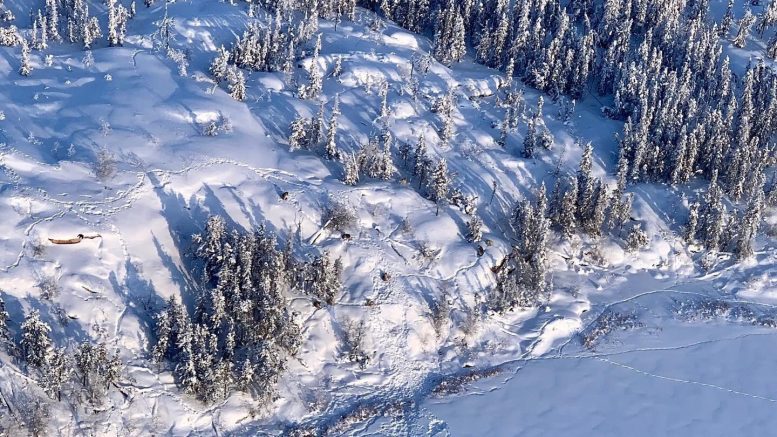The territorial government has awarded a second contract to continue shooting wolves from the air, this one worth $100,000.
The second contract, like the first, was awarded to Great Slave Helicopters, according to Open NWT. Combined, the contracts are worth $191,000 for about three weeks of aerial removal.
The latest contract covers removal activities from May 7 to May 15, but was awarded on May 9.
“The aerial removal work has faced significant weather delays as well as operational challenges due to COVID-19,” said Joslyn Oosenbrug, spokesperson for the Department of Environment and Natural Resources, in an email. “The extension is needed to allow for more opportunity to direct removal effort towards both winter ranges thereby increasing potential to reach appropriate removal levels.”
ENR’s goal is to remove 60 to 80 per cent of the wolves in the winter ranges of the Bathurst and Bluenose-East caribou herds; the revised numbers are 27-37 wolves within the Bathurst range and 66-90 wolves within the Bluenose-East range.
To achieve those targets, ENR increased the dollar amount harvesters can receive for wolf pelts through its Enhanced North Slave Wolf Harvest Incentive Program: from $1,200 for a carcass and up to $1,950 for a professional-level pelt.
Both the aerial cull and incentive program are part of a joint five-year wolf management plan submitted by ENR and the Tłı̨chǫ Government. The Wekʼèezhìi Renewable Resources Board approved a one-year pilot project for aerial removal in mid-March, two days before the deadline to begin doing so this year.
Despite not having final numbers on wolves harvested, ENR determined it needed to begin shooting them from the air to meet the reduction targets.
Oosenbrug said aerial efforts have removed 34 wolves so far. Asked which range these corresponded to, she said that will be determined once the season is over.
Jody Pellissey, the WRRB’s executive director, said the board has “further requested that a revised joint management proposal for 2021-2024, including lessons learned from implementation of the 2020 pilot year, be submitted on August 21, 2020.”
More information on the board’s decision can be found on its public registry.
Final cost still coming
To be clear, the exact cost of the aerial shooting is still to be determined based on billable hours flown. The same goes 一 more or less 一 for the harvest program; the department won’t have a final cost until it compiles a total number of harvested wolves and how they were prepared.
“Depending on expertise, each government is leading and funding different aspects of the program,” said Oosenbrug. “For example, the Tłı̨chǫ Government is the lead on the Tłı̨chǫ community wolf harvest camps. The GNWT is the lead on the Enhanced North Slave Wolf Harvest Incentive Program and on aerial removals.”
ENR says there will be no more aerial removal past May 15, as both herds will have crossed over to their calving grounds in Nunavut for the summer.
Correction May 12: A previous version of this story misstated the Wekʼèezhìi Renewable Resources Board approved the proposed five-year plan. In fact, it approved a one-year pilot project for aerial removal. The article has been updated to reflect this information and with Ms. Pellissey’s comments. CKLB regrets the error.









